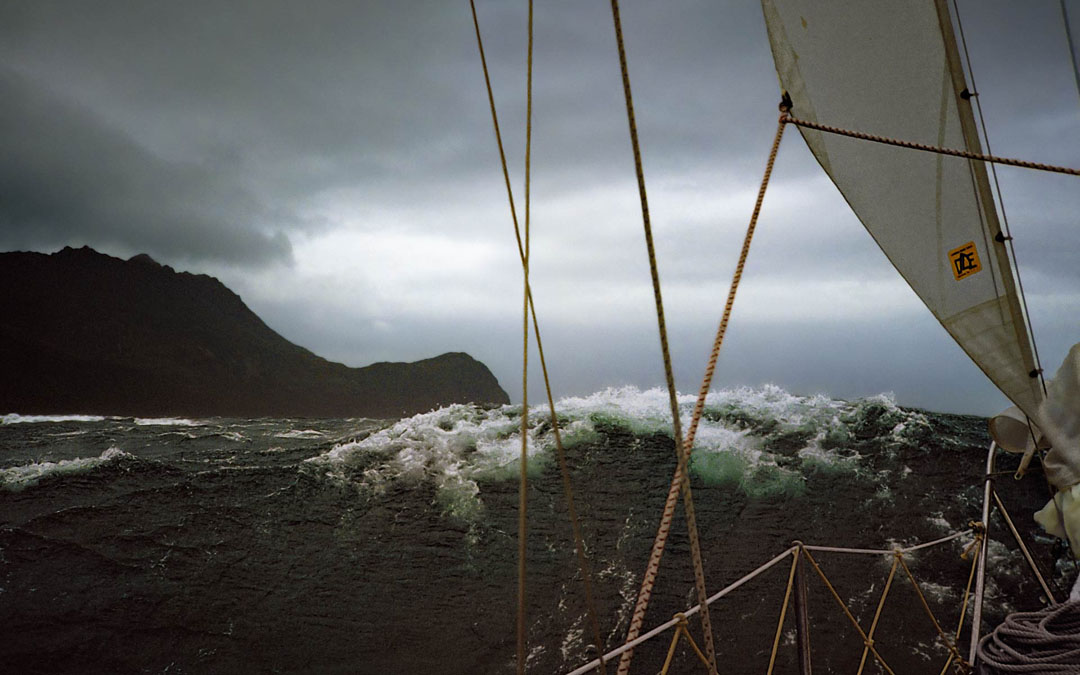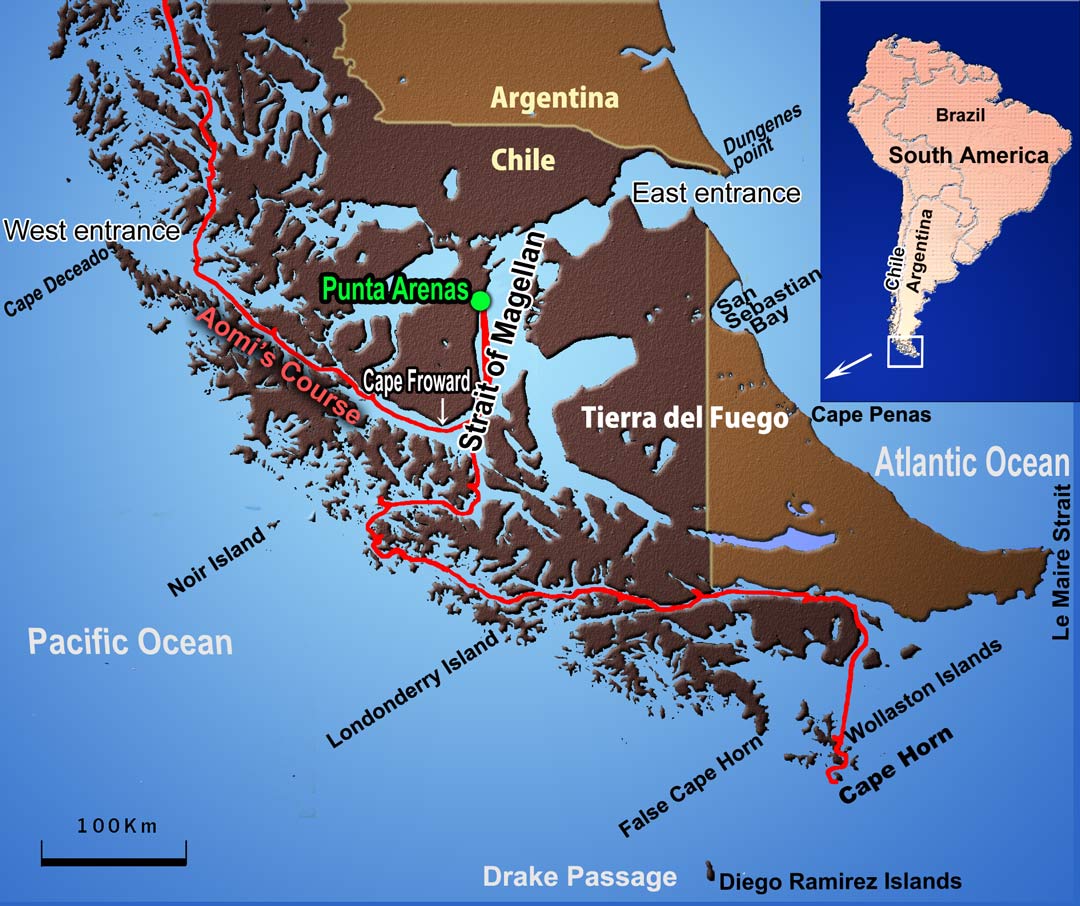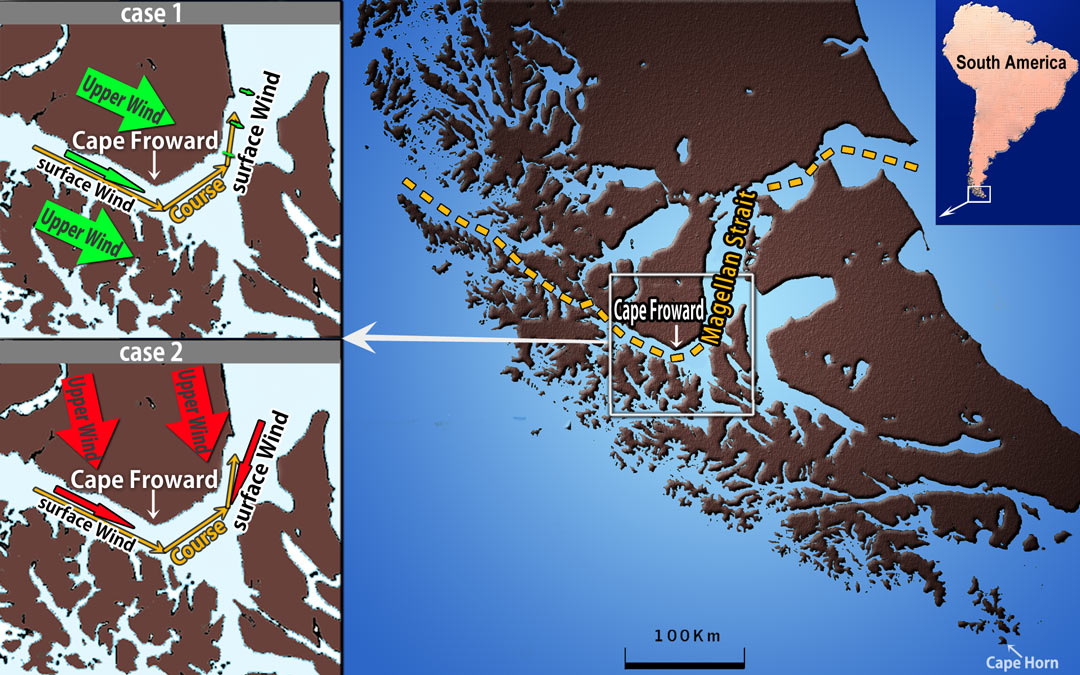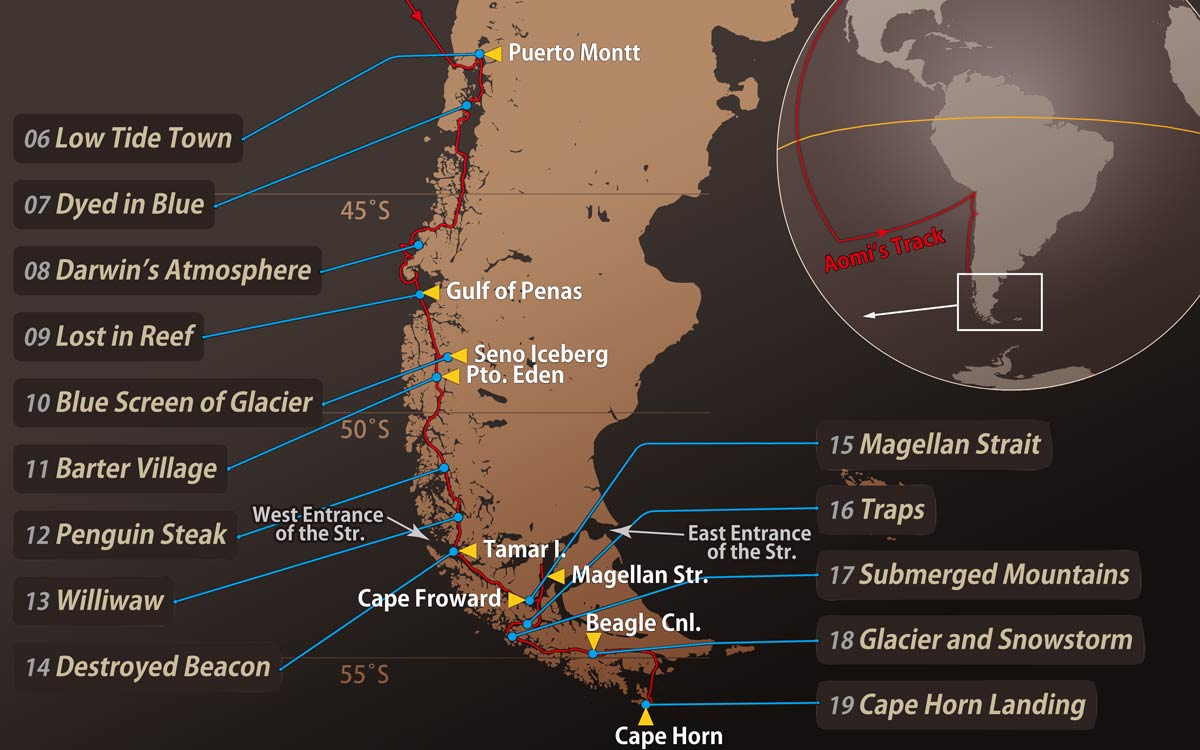15. The Strait of Magellan
There are times when we are forced to move forward with uncertainty, unable to see our future, and are not even permitted to stop. At such moments, we can do nothing but believe in our good fortune.
This was the case for me as I sailed through the Strait of Magellan.

“What a surprise!”
As the spray of water overtakes and engulfs my boat, Aomi, from behind, I think, “This is far too strong.”
On the surrounding water, waves curl and crumble in strikingly vivid green, bursting into plumes of spray. The wind is so strong that it carves stripes across the slopes of the rising waves.
Honestly, I am terrified, so I decide to slow down Aomi. After lowering the mainsail, I pull the downhaul rope in the cockpit to lower the tiny storm jib as well, one-quarter the size of the regular jib I had custom-made in San Francisco.
Nevertheless, driven solely by the wind against her bare mast, Aomi still sails swiftly, heading east through the Strait of Magellan.
Although no sails remain to dampen the rolling, the ride is strangely stable. I leave the helm to the wind vane, go below to the cabin, light the Primus kerosene burner, and begin preparing lunch.
“Will I reach the next anchorage by sunset?”
When darkness falls and visibility vanishes, Aomi may run aground or crash into rocks, especially in this narrow, wind-swept strait.

In the middle of the Strait of Magellan, Cape Froward extends out, marking the southernmost point of the South American continent. Here, the strait bends, changing from an east–west waterway to a north–south waterway.
How will the wind blow when Aomi passes the cape and enters the north–south waterway?

The wind usually blows along the passage in the narrow waterway, surrounded by mountains. However, predicting the exact direction of the wind is challenging, as even minor variations in the upper wind patterns or the contour of the land can drastically alter its behavior at the sea surface.
After Aomi passing Cape Froward, the wind, shaped by the surrounding terrain, could become either a weak crosswind or a strong headwind.
If it becomes a strong headwind, making any headway will be impossible, while I repeatedly tack and zigzag through the narrow channel. Worse still, Aomi will be pushed back by the surface currents driven by the wind.
Even if Aomi could somehow sail upwind, the sun would inevitably set along the way. Then she will likely run aground in the pitch-black darkness, far from any sign of civilization.
How long will this strong wind last? What will it be like after Aomi rounds the cape? What should I do if I face a strong headwind?
Everything is unknown, uncertain, and frightening. Of course, no one can help me; I can only rely on myself. Yet my experiences in Patagonia have taught me that I am truly powerless in such strong winds.
And yet, hope and courage somehow fill my heart; I am not in despair. I hold onto the firm belief that the wind will ease once I round the cape, and I will be safe.
Even fearing the worst and at a loss, I believe in my good fortune.
(A detailed explanation of this episode can be read here.)

Hi! Any questions or suggestions about the content are greatly appreciated.
I’d also love writing tips from native English speakers. Since English isn’t my first language, if you notice any awkward phrases or anything that seems off, please let me know.
Thank you!
E-mail